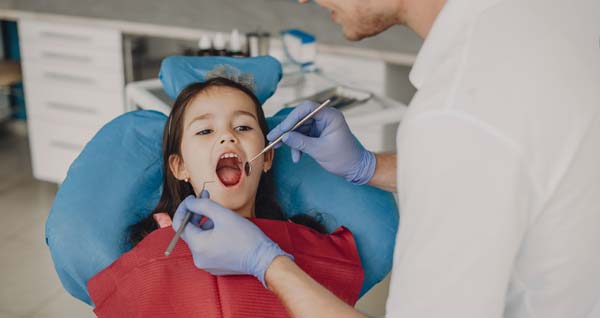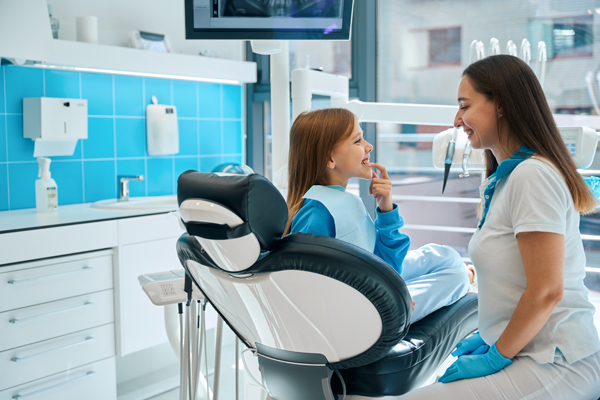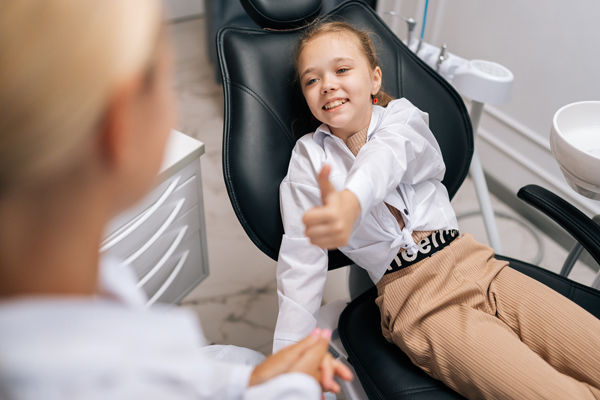What Is Phase 1 Orthodontics?

Phase 1 orthodontics typically starts around the ages of six to nine. The American Association of Orthodontists recommends bringing children in for a bite evaluation no later than their seventh birthday. At this point, their bites should be developed enough to identify potential problems, and the soft structures of their facial structures are easier to mold.
Understanding phase 1 orthodontics
Phase 1 orthodontics focuses on addressing orthodontic issues before they turn into more severe problems later in a child’s life. It gives the orthodontist a chance to address issues like abnormalities in the patient’s jaw structures or insufficient space for all of their permanent teeth.
Some of the benefits of getting children early orthodontic treatments include:
- It improves the appearance of the child’s teeth which helps to protect them against bullies
- It can help to correct bad habits like thumb sucking
- It typically leads to shorter treatments with corrective oral appliances like braces
- It helps with speech development
- It ensures there is enough space on the child’s jaw for all of their permanent teeth
- Reduces the chances of developing impacted teeth
Orthodontic appliances like braces are typically used to help fix bite issues. Treatment times are unique for each patient, but they are typically anywhere from nine to twelve months. Adults who need orthodontic treatments often have to wear their appliances for somewhere between 12 to 36 months. At this point, their facial structures have hardened, making it harder to mold them.
Some of the oral appliances an orthodontist might recommend to help correct a child’s bite issues include:
- Headgear: These are used to correct a child’s bite, and to promote proper jaw growth and alignment. They are typically recommended when a child’s bite is severely misaligned. The appliance is worn partially out of the mouth for about 12 hours daily
- Braces: Phase 1 orthodontics might include a limited phase of braces on specific teeth. Braces are one of the oldest oral appliances used to straighten teeth, and they work by applying a gentle pushing force on the patient’s teeth. They are made of brackets and wires that are attached to the patient’s teeth. The wires are adjusted periodically to increase or decrease the forces applied to the child’s teeth
- Retainers: These appliances are used to keep a child’s teeth properly aligned after orthodontic treatments. Retainers can also be used to fix minor orthodontic issues. How long a child needs to wear retainers varies based on the severity of the orthodontic issue treated
- Space maintainers: These devices are used to keep the space left by a lost baby tooth. Baby teeth guide the permanent teeth behind them and prevent the remaining teeth from shifting towards the space. Covering the space with a maintainer helps to stop this from happening
Protect your child’s bite
Spotting orthodontic issues early on helps to prevent them from turning into more severe issues later on. Call or stop by our Irving to set up an appointment with our orthodontist so your child’s bite can be examined.
Request an appointment here: https://valleyranchorthodontics.com or call Valley Ranch Orthodontics at (972) 200-1016 for an appointment in our Irving office.
Check out what others are saying about our dental services on Yelp: Phase 1 Orthodontics in Irving, TX.
Related Posts
Phase Two orthodontics is the second stage in comprehensive orthodontic treatment, typically following an initial intervention known as Phase One. The primary objective of Phase Two orthodontics involves perfecting alignment, correcting bite issues, and achieving optimal aesthetics and function. Patients often undergo Phase Two orthodontics during adolescence, once most permanent teeth have emerged, allowing for…
Early orthodontic treatment — or Phase One orthodontics — addresses children's dental and jaw development issues before all their permanent teeth emerge. This treatment can prevent severe orthodontic problems and reduce the duration of treatment in the future. Early assessment and intervention can provide long-term benefits, making Phase One orthodontics a proactive solution for your…
A smile makeover can transform the appearance of teeth, creating a more confident and attractive smile. This process involves a customized plan that corrects alignment issues, gaps, discoloration, and other cosmetic concerns. Each treatment fits individual needs and goals, ensuring the best possible results.A smile makeover is a plan to improve the overall look of…
Damon Braces can straighten your smile with less discomfort than traditional braces. These self-ligating braces use a special sliding mechanism that allows the wires to move freely, reducing friction and pressure on the teeth. Before starting treatment, it is important to understand how they work, their benefits, and what to expect.Damon Braces uses a built-in…


